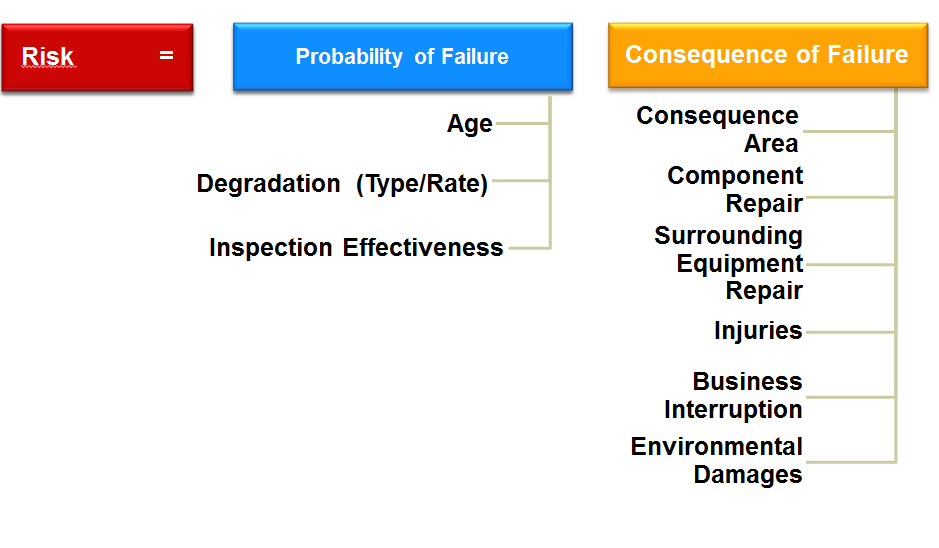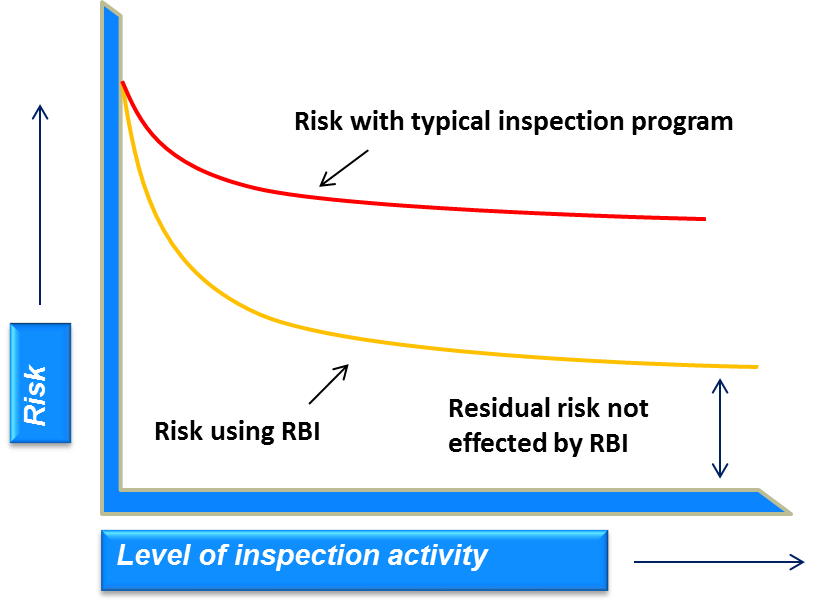RBI Risk: Difference between revisions
Jump to navigation
Jump to search
John Leavitt (talk | contribs) No edit summary |
John Leavitt (talk | contribs) No edit summary |
||
| (One intermediate revision by the same user not shown) | |||
| Line 2: | Line 2: | ||
=Calculation of Risk= | =Calculation of Risk= | ||
In ReliaSoft RBI and API 581 risk is equal to the product of the probability of failure and the consequence of failure. This can be seen in the below graphic. | In ReliaSoft RBI and API RP 581 risk is equal to the product of the probability of failure and the consequence of failure. This can be seen in the below graphic. | ||
[[File:RiskCalc.PNG]] | [[File:RiskCalc.PNG]] | ||
==Risk As a Function of Time== | |||
Risk from multiple causes do compound; however, they are not additive as the probabilities of failure for each cause are not additive. | |||
=Risk Cannot be Zero= | =Risk Cannot be Zero= | ||
Risk cannot ever be equal to zero because residual risk factors always exist. The below graphic shows how residual risk is not affected by RBI. | Risk cannot ever be equal to zero because residual risk factors always exist. The below graphic shows how residual risk is not affected by RBI. | ||
[[File:Risk vs. Level of Inspection.PNG]] | [[File:Risk vs. Level of Inspection.PNG]] | ||
Latest revision as of 17:35, 22 April 2014
Calculation of Risk
In ReliaSoft RBI and API RP 581 risk is equal to the product of the probability of failure and the consequence of failure. This can be seen in the below graphic.
Risk As a Function of Time
Risk from multiple causes do compound; however, they are not additive as the probabilities of failure for each cause are not additive.
Risk Cannot be Zero
Risk cannot ever be equal to zero because residual risk factors always exist. The below graphic shows how residual risk is not affected by RBI.


